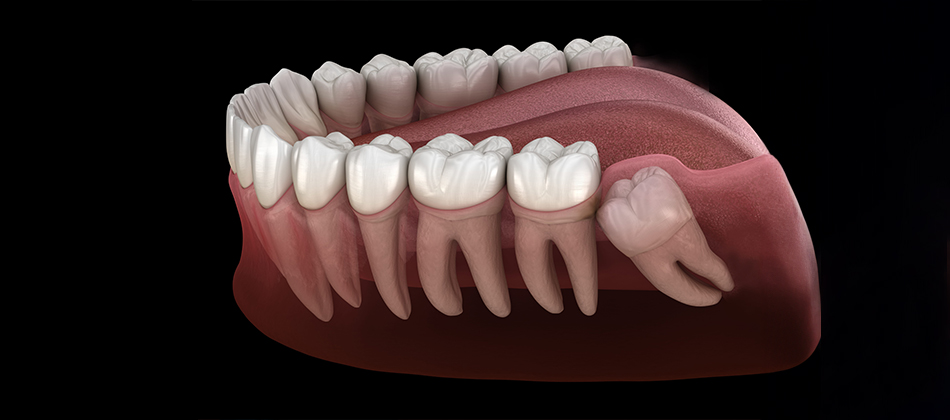What Are Wisdom Teeth and Why Do They Come Out?
Wisdom teeth are the third molars that appear between the ages of 18 and 25. These teeth are the last teeth to emerge among other teeth in the mouth. Although they are known as wisdom teeth, they may not appear when everyone reaches the age of 20. These teeth can cause problems because there is no more room in our jaws.
The eruption of wisdom teeth can disrupt the proper alignment of other teeth, causing teeth to become crowded and crooked. Additionally, since wisdom teeth do not have enough space in the mouth, they can cause food particles to get stuck between the teeth and cause infection. In addition, when wisdom teeth come out, they can cause other teeth to be extracted. For these reasons, dentists often recommend removing wisdom teeth.
The Emergence Process and Symptoms of Wisdom Teeth
Wisdom teeth, also known as third molars, are the last teeth that appear between the ages of 17 and 25. The eruption of these teeth is manifested by swelling of the gums, pain, pressure, and in some cases even some discomfort in the jawbone.
During tooth eruption, gum sensitivity, redness and swelling may be observed. This sensitivity can be felt not only in the area where the tooth emerges, but also in neighboring teeth and jaw bones, due to the pressure created by the tooth. Pain and discomfort may continue after the tooth eruption is complete. This is due to possible complications such as infection, gingivitis or the formation of a cyst in the area where the tooth grows. For this reason, dentists often recommend removing wisdom teeth before they emerge.
Wisdom Teeth Extraction Process and Post-Healing
Wisdom teeth extraction can be an anxiety-provoking procedure for many people. This procedure can be more challenging than the extraction of other teeth and usually requires a longer recovery period. Here are suggestions for the wisdom teeth extraction process and beyond:
Tooth extraction procedure: Wisdom teeth may often be stuck under the gums or behind other teeth. Therefore, the dentist may need to cut or remove the gum to remove the tooth. The procedure is performed under local anesthesia and is performed without feeling of pain. In some cases, the dentist may also use an additional method of anesthesia, such as sedation or general anesthesia.Healing process: Pain, swelling and bleeding may occur after tooth extraction. The most intense pain is usually experienced within the first 24 hours. Pain can be relieved with prescription painkillers prescribed by the dentist or mouthwash containing painkillers. Swelling and other symptoms can be reduced with ice compresses.Food: Soft, easily chewable foods should be preferred for the first few days after tooth extraction. Also avoiding hot, spicy or acidic foods can help the healing process. It is also important to avoid habits that irritate the gums, such as smoking.Oral hygiene: During the healing process after a tooth extraction, it is important to maintain your normal oral hygiene practices, such as brushing your teeth or using mouthwash. However, care should be taken not to directly contact the tooth extraction area. Your dentist can give you information about appropriate oral care methods.Work and activities: A few days of rest is recommended after tooth extraction. It is also important to avoid heavy exercises and physical activities. You can talk to your dentist about when you can return to work after tooth extraction.Follow-up appointments: After the extraction, your dentist may want to check you at regular intervals. These appointments are important to ensure that the gums heal and reduce the risk of infection. Your dentist will have clear instructions for when to make an appointment. During appointments, your dentist will also check healing at the extraction site and detect possible complications. If you have symptoms such as infection, pain, swelling or bleeding after the extraction, you should definitely not miss these appointments.As a result, careful planning and proper care is important before and after wisdom teeth removal. You should discuss all aspects of treatment with your dentist and follow instructions exactly during the post-extraction recovery process. In this way, you can have a healthy mouth and teeth structure.

